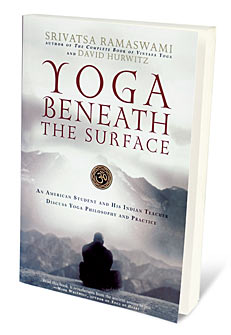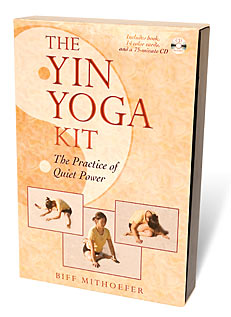This teacher in Washington, DC, integrates Rolfing with yoga to help his students move more freely.
With his history of weightlifting, Terence Ollivierra had a tendency to overdo yoga poses, which led to thigh and hip pain. He found no relief from acupuncture or chiropractic therapy, and while he sought balance through his yoga practice, the process was slow, the discomfort worsening. Then, in 2005, an Iyengar Yoga teacher introduced Ollivierra to Rolfing, the hands-on bodywork designed to release tight fascia (connective tissue) so that the body can realign itself. Rolfing—combined with an integrative yoga practice—proved to be the solution. Ollivierra went on to complete his Iyengar Yoga teacher certification with John Schumacher in 2009, and trained to be a Rolfing/Structural Integration body worker so that he could better serve his yoga students. Today, Ollivierra is a perceptive teacher who aims to help students identify and modify movement patterns that cause them pain.
How does your Rolfing training inform your yoga teaching?
I have become much more sensitive to the subtle causes of major imbalances in people’s physical structures. Before a student tells me about an injury, I have already noticed how she stands and walks and have a good idea of issues she’s facing—and where to begin looking for solutions. For example, someone’s back may feel good in a particular yoga pose, such as a backbend, but her alignment could create an issue if she’s only moving from her lower back. She may feel a “release” while in the pose that might give temporary relief, yet she has problems later because a pattern of poorly performed asana is being repeated again and again.
What do you love most about your yoga students?
Their humility. The fact that they show up is humility. I am a relentless teacher. The purpose of a class is to experience another perspective on how this work can be done. I don’t let people rest in their habits. You have to be present or else you’ll get called out.
What is your practice like?
Most of my practice is Savasana and breathing, such as yoga nidra, the “yoga sleep” meditation in Savasana. I used to do a minimum of three hours of asana a day, not counting breathwork and meditation. Now I do just a few poses—they change depending on the day and my needs—beginning and ending with Savasana (with knees bent at 90 degrees, feet fist-distance apart, elbows wide with palms down or hands on the belly). It takes an hour or two at most because, after all my training, I’m sensitive to my own structure and its movements. And I’m not one to do things halfway.
In the Details: Ollivierra shares a few more of his favorite things.
Movie: I’m a Star Wars geek. I often fall into a Yoda voice while teaching. I’ll say, “Do or do not—there is no try!”
Music: I play electric bass and fool around on guitar and keyboard as well as double Native American flute and the hulusi, a Chinese flute.
TV Show: Avatar: The Last Airbender. This cartoon is deep, full of wisdom, and will leave you feeling good all around.
Signature Dish: Coconut curry lentils. I’ll add in kale, butternut squash, and sweet potato.
Books : Eknath Easwaran’s translation of the Bhagavad Gita, and Eckhart Tolle’s The Power of Now.








